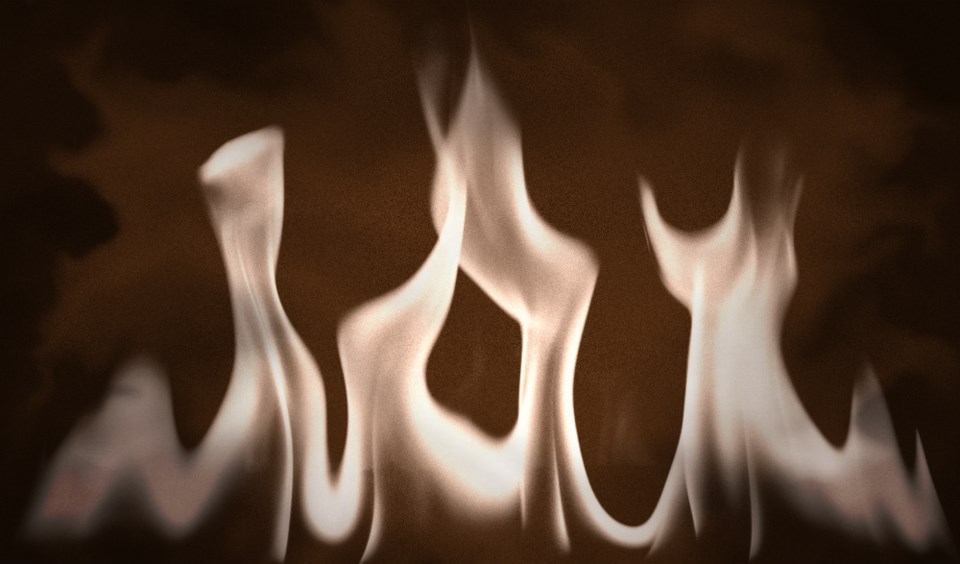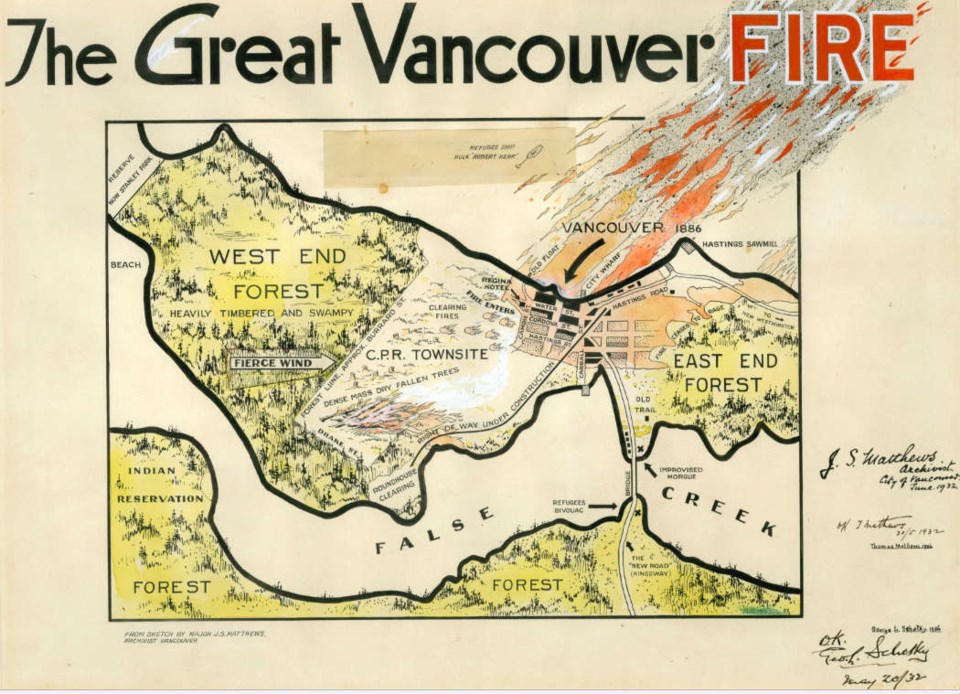 Photo Shutterstock
Photo Shutterstock
On June 13, 1886 a fire destroyed most of the newly incorporated City of Vancouver.
The Old Hastings Mill Store Museum (1575 Alma Street) is hosting an event, The Paddle Song & the Great Fire of Vancouver, at 1 p.m. on Saturday as a "thank you to the Indigenous first responders during the Great Vancouver Fire of 1886" who saved many lives.
The event includes a performance by Marissa Nahanee of the Squamish Nation. The Native Daughters of BC Post No.1 will deliver a declaration of gratitude, there will be a replica of the 'Tent City Hall" photo outside the musuem and entry to the museum will be free.
The Vancouver Public Library's 2018 Indigenous storyteller T’uy’t’tanat-Cease Wyss is also focusing her residency on collecting stories from descendants of the survivors and rescuers that witnessed The Great Fire.
Here is an article about the event from the EastEnder, published in June, 1986 on the 100th anniversary of the devastating fire:
The City that rose from the ashes
By Len Morgan
June 13, 1886 was an unusually windy day. The weeks leading up to that Sunday were hot and rainless but the men working to clear the proposed Canada Pacific Railway townsite of stumps and fallen trees didn't take any heed of Nature's warnings.
Quite unexpectedly, a gust blowing off English Bay snatched a spark from the clearing fires and sent it flying into a nearby shanty shack. The wood frame building exploded into flame. The time was 2 p.m. The great Vancouver fire that would destroy the whole town in half an hour had started.
For the men of Gastown, the first indication that anything was even slightly wrong was that the usually thin, but always constant stream of smoke from the clearing site to the west had become a dense and dark billowing monster.
 This item is a print of a drawing by Major J. S. Matthews. City of Vancouver Archves
This item is a print of a drawing by Major J. S. Matthews. City of Vancouver Archves
Father Clinton had correctly interpreted what this meant and the bells of St. James' Church at Powell and Westminster Road was rung for the whole city to hear the death knell.
As the fire roared closer--up and down the slatted wood sidewalks and from building to building-- the people of Vancouver knew that their only chance for survival was to abandon their homes. They ran to the east, to the south, but most took refuge in the waist deep water by the city wharf at the north foot of Carrall street.
"The city did not burn," commented an alderman when it was all over, "it was consumed by fire. The buildings simply melted before the fiery blast." More than 1,000 buildings were lost in the fire, and 3,000 people were homeless. Every living thing and every structure that was built in the townsite of Vancouver--save three--was destroyed in 20 minutes.
The people were very quick to rebuild their city, and by 3 a.m. the next day the first tent was pitched on the ashes of what stood only hours before. At Carrall and Water street the new civic centre was built in less than five minutes. A tent was thrown on the ground and a freshly-painted sign reading "City Hall" was hung over the entrance-way.
Within three days, a clothing store, a three-storey hotel, a pub, a hardware store, and a half dozen other firms were open for business.
There would be four hundred homes built in the next three months, many of them built to the city's new bylaw requiring more sturdy construction.
This story was taken from the EastEnder newspaper archives from 1986 Vol. 3, No. 39 June 12, 1986.


